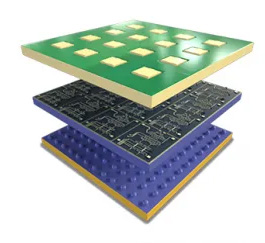Summary
As demands for more data and higher data rates increase, the currently used portion of the electromagnetic (EM) spectrum is becoming congested, creating data movement bottlenecks.

One solution is to operate communication systems at higher frequencies, enabling larger channel bandwidths and higher channel capacities. The upper millimeter-wave band, known as G-band (110 GHz to 300 GHz), represents an attractive, underutilized portion of the EM spectrum for high data-rate communications applications.
Today, adequate radio frequency (RF) electronics do not exist to support G-band operation, particularly for applications with size, weight, and power (SWaP) constraints. Moreover, the efficiency of today’s G-band electronics is poor and must be addressed to make G-band systems viable.
As has been the case for communications at lower frequencies, phased arrays and massive multiple-input, multiple-output (MIMO) systems are the preferred implementation solution for millimeter-wave systems. G-band arrays can be implemented using either silicon-based (e.g., CMOS, SiGe) RF integrated circuits (ICs) or III-V compound semiconductor (e.g., GaAs, GaN, InP) monolithic microwave integrated circuits (MMICs). Each approach has advantages – but also limitations.
The ELectronics for G-band ARrays (ELGAR) seeks to develop integration technologies needed to create compact, high-performance III-V RF electronics to enable communication and sensing systems at G-band frequencies. These integration technologies will combine the superior RF performance of III-V RF electronics with the advanced interconnect features of silicon-based technology.
The ELGAR program will leverage this approach to demonstrate compact, high-efficiency power amplifier (PA) MMICs and efficient, transmit and receive array front-end test articles that operate at 220 GHz.
To achieve its objectives, ELGAR will focus on two technical challenges. The first challenge addresses efficiency concerns at the MMIC level. The program seeks to develop compact, high-efficiency G-band MMICs – moving from less than 10% efficiency to more than 30% efficiency. The second challenge is achieving low-loss off-chip interconnects between adjacent G-band array components. Performers will then integrate the ELGAR MMICs into compact, efficient 16-element transmit and receive arrays.
